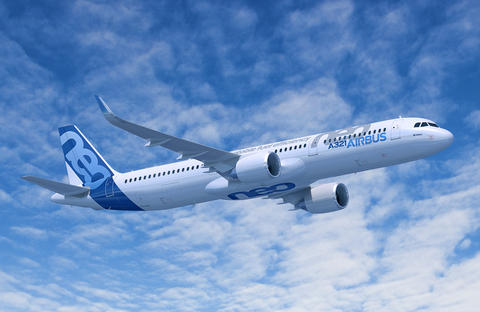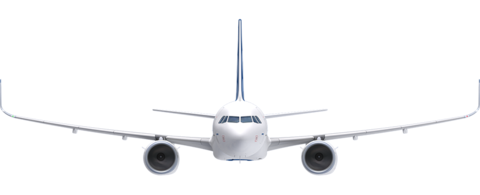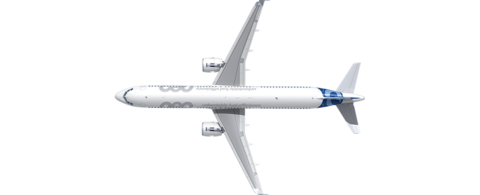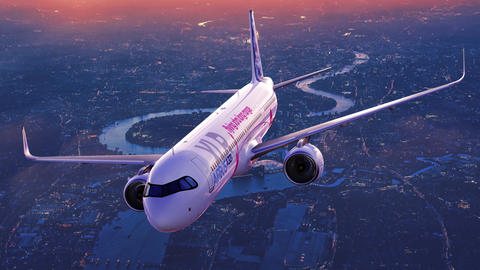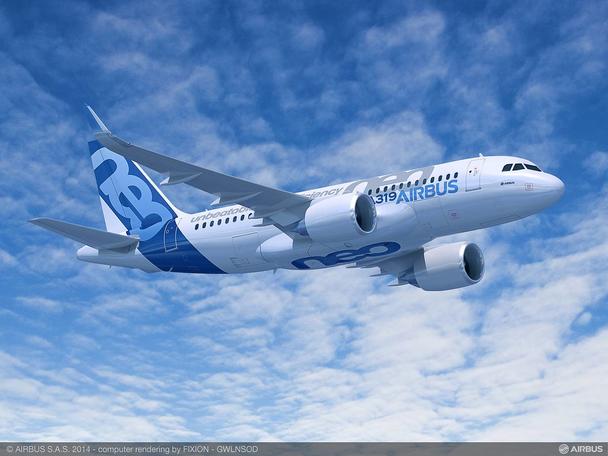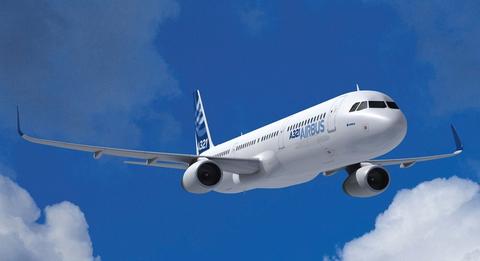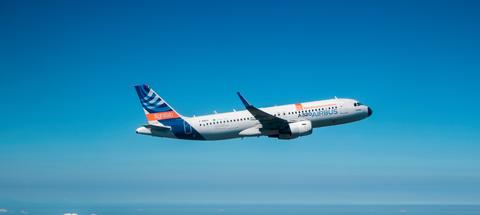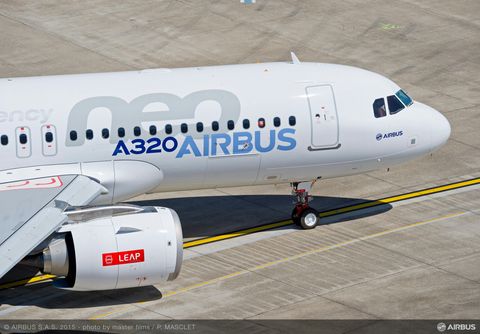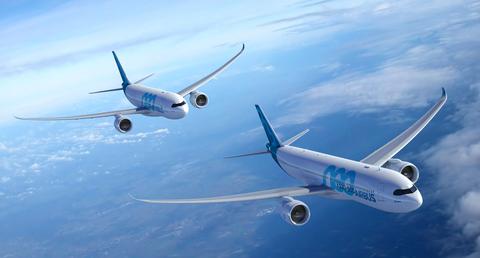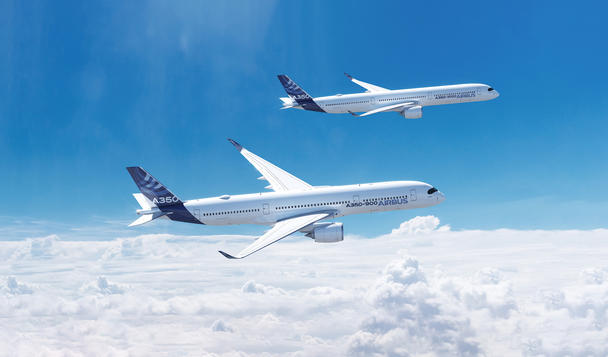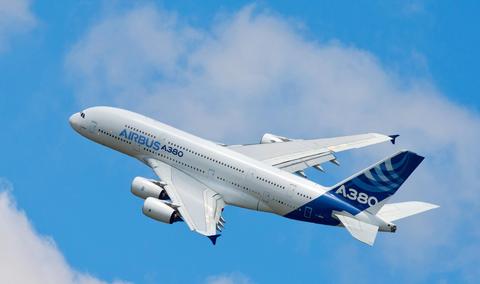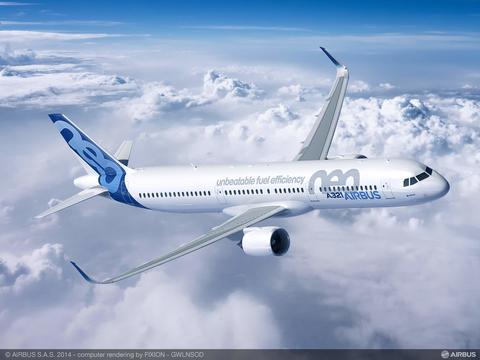
The longest-fuselage A320 Family member
Like every member of the A320 Family, the A321’s widest cross-section in the single-aisle jetliner category enables airlines to utilise the Airbus standard of 18-inch-wide seats – giving passengers an even more comfortable flight.
The cabin width also offers the possibility for a wider aisle and plenty of overhead storage space to help passengers board and disembark with minimum fuss, as well as giving cabin crew more space in which to work.

Elevating the A320neo’s spaciousness with Airspace
Airbus’ award-winning Airspace interior concept brings a totally new definition of cabin comfort on the A321.
Adapted from the successful introduction on widebody A330s and A350s, Airspace features customisable lighting for a unique welcome during passenger boarding while also contributing to reducing jet lag.
Other cabin enhancements include the integration of new slimmer sidewall panels for extra personal space at the passengers’ shoulder level; better views through the windows with redesigned bezels and integrated window shades; the latest in full LED lighting technologies and the largest overhead bins for single-aisle jetliners.

Performance improvement with the NEO version
The industry-leading quality and efficiency of Airbus’ A320 Family has been further enhanced with its NEO versions.
NEO provides minimum change with maximum benefit through the availability of two advanced engine choices – CFM International’s LEAP-1A and Pratt & Whitney’s PurePower PW1100G-JM geared turbofan, along with Airbus’ fuel-saving Sharklet™ wingtip devices. Together, they bring per-seat fuel improvements of 20%, along with additional range of up to 500nm or two tonnes of extra payload.
Airbus expanded the A321neo’s seating capacity with the optimised use of cabin space, increased exit limits and a new cabin door configuration. Called the “Cabin-Flex,” it increases the jetliner’s maximum certified capacity to 244 seats, while still accommodating Airbus’ modern comfort standard of seats that are at least 18 inches wide.

A321LR: More range on single-aisle routes
The A320neo’s long-range variant – the A321LR – provides extended range, capable of flying routes of up to 4,000 nm with 206 passengers by utilising extra fuel in three Additional Centre Tanks (ACTs).
Ideally suited to transatlantic routes, the A321LR allows airlines to tap into new long-haul markets not previously accessible with current single-aisle aircraft.
Operators can outfit its cabin with configurations ranging from a single-class layout to multi-class arrangementsfeaturing full-flat premium seats for true long-haul comfort. Passengers benefit from the A321’s low interior noise and latest in-flight entertainment.
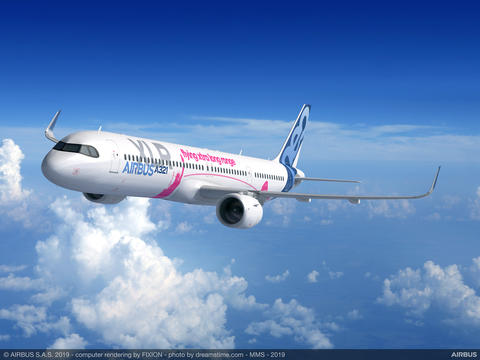
A321XLR: Going the distance with efficiency extra-long range
The A321XLR further extends the single-aisle jetliner offer as Airbus’ next evolutionary step for the A321neo.
It will offer even more range – up to 4,700nm in a comfortable two-class layout, thanks to an increased maximum takeoff weight (MTOW) of 101 tonnes, enabling the jetliner to be fitted with a permanent Rear Centre Tank (carrying 12,900 litres of fuel) and an optional forward ACT.
Aerodynamic-enhancing Sharklets on the wings and its fuel-efficient engines ensure outstanding environmental performance with 30% lower fuel burn per seat and a noise footprint that is 50% lower for passengers and airports.
Configured with true long-haul full flat seats – or up to 244 passengers in single-class layouts – the A321XLR cabin benefits from the Airspace interior as a baseline, featuring a range of cabin elements that are pleasing for passengers and offer differentiation for airlines.
With the A321XLR, the A320neo Family shares common cockpit ergonomics with the Airbus widebody jetliners, and are to have a common cabin design language and the latest interior technology.
As single-aisle flight times grow longer with the A320neo’s increased range, Airbus also is prioritising in-flight wireless connectivity to enhance the passenger experience, while keeping cabin personnel and flight crews informed of the on-board status.
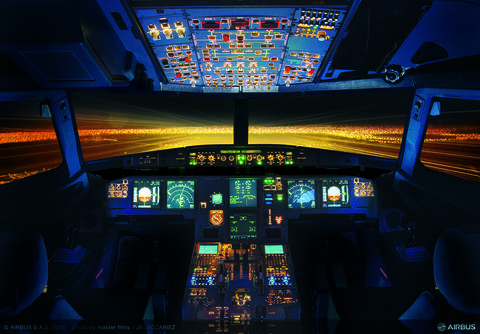
Family commonality
The A321’s digital fly-by-wire control system provides cockpit commonality that reduces training and maintenance costs. Pilots certified on the A321 can fly any member of the A320 Family, and thanks to Cross Crew Qualification (CCQ), they can transfer to other Airbus aircraft through transition training, saving time and reducing costs.
With so many advantages for pilots, crew, airlines, and passengers, it’s easy to see why the A321 is such an important part of Airbus’ best-selling single-aisle aircraft family.
